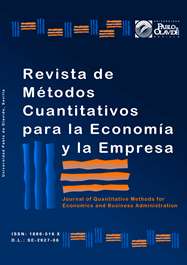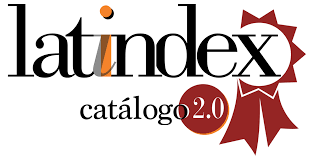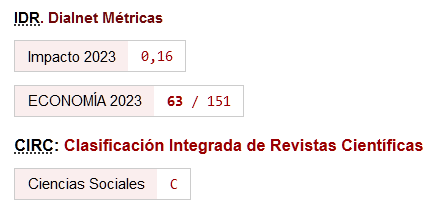Equilibrio en un mercado oligopólico con una firma dominante en el mercado de las tarjetas de pago
DOI:
https://doi.org/10.46661/revmetodoscuanteconempresa.5567Palabras clave:
integración vertical, mercado de dos lados, poder de mercadoResumen
El objetivo del presente trabajo es validar la existencia de poder de mercado ejercido por una firma integrada verticalmente en el mercado de procesamiento de operaciones realizadas mediante tarjetas de pago. La metodología usada se basa en el análisis de la variación de ese indicador como resultado de la potencial entrada de una franja de firmas en el mercado de la afiliación de comercios, lo que presiona a un mayor nivel de competencia distribuidor en la industria. Para lograr lo anterior, se utiliza como modelo a seguir una estructura oligopólica donde hay una empresa líder y una franja de empresas que compiten con esta, es decir, el trabajo está basado en un juego a la Stackelberg, buscando una estimación econométrica de forma indirecta a través de la elasticidad de demanda residual. Como resultado es que se obtiene para el periodo comprendido entre enero de 2013 a mayo de 2020, un poder de mercado que evoluciona de forma directa con la cuota de mercado de la firma líder del mercado, siendo los niveles igual a 1.14% a 114.35%, siendo este último valor el que predomina en la práctica en dicho mercado.
Descargas
Citas
Bain, J. (2013). Barriers to new competition: Their character and consequences in manufacturing industries. Cambridge: Harvard University Press.
Baye, M. (2010). Basic oligopoly. Managerial economics and business strategy (pp. 313- 338). Seventh Edition. Nueva York: McGraw-Hill.
Bhuyan, S., & López, R. (1997). Oligopoly power in the food and tobacco industries. American Journal of Agricultural Economics, 79(3), 1035-1043. https://doi.org/10.2307/1244442
Bresnahan, T. (1982). The oligopoly solution concept is identified. Economics Letter, 10(1-2), 87-91.
Cakir, M., & Balagatas, J. (2012). Estimating market power of U.S. dairy cooperatives in the fluid milk market. American Journal of Agricultural Economics, 94(3), 647-658.
Carlton, D., & Perloff, J. (1999). Noncoperative oligopoly. Modern industrial organization (pp. 153 - 193). Third Edition. Massachusetts: Addison Wesley Longman Inc.
Celani, M., & Stanley, L. (2005). Defensa de la competencia en Latinoamérica: aplicación sobre conductas y estrategias. Serie estudios y perspectivas, 28. CEPAL: Buenos Aires.
Coccorese, P., Girardone, C., & Shaffer, S. (2021). What affects bank market power in the Euro area? A structural model approach. Centre for Applied Macroeconomic Analysis, Crawford School of Public Policy, The Australian National University. Working Papers N°15.
De Loecker, J., & Eeckout, J. (2017). The rise of market power and the macroeconomic implications. National Bureau of Economic Research. Working Paper 23687.
Driscoll, P., Kambhampaty, M., & Purcell, W. (1997). Nonparametric tests of profit maximization in oligopoly with application to the beef packing industry. American Journal of Agricultural Economics, 79(3), 872-879.
Dvorak, P. (2005). Rethinking the Monti - Klein model of banking industry: New insights about the separability of loans and deposits decisions. Charles University - Center for Economics Research and Graduate Education, CERGE - EI. Praga. Discussion Paper N°138.
Escobar, G., & Valdés, I. (2021). Economies of scale in the payment card market in Chile. International Journal of Economics and Business Administration, 9(2), 67-81. https://doi.org/10.35808/ijeba/689
Ferrara, E. (2016). Monopoly power in platform dominated Mmarkets. Studi Economici, 118-119-120, 69-87.
Freixas, X., & Rochet, J. (2008). The industrial organization approach to banking. Microeconomics of banking. Second edition. Cambridge: The MIT Press.
Fungacova, Z., Solanko, L., & Weill, L. (2010). Market power in the Russian banking industry. Bank of Finland, Institute for Economies in Transition. Discussion Papers N°3.
Garber, G., & Issao, M. (2015). The break of brand exclusivity in Brazilian credit card acquiring: effects and markup-cost decomposition in a price dispersion setting. Department of Economics, University of São Paulo (FEA-USP). Working Papers N° 16.
Kahai, S.K., Kaserman, D.L., & Mayo, J.W. (1996). Is the “dominant firm” dominant? An empirical analysis of AT&T’s market power. The Journal of Law & Economics, 39(2), 499-517. www.jstor.org/stable/725714.
Melnik, A., Shy, O. & Stenbacka, R. (2005). Relative market share, leadership, and competition in concentrated banking markets. Turin, International Centre for Economics Research, ICER Working Paper N°14.
Motta, M. (2004). Market definition and the assessment of market power. Competition policy: theory and practice. First Edition. Cambridge: Cambridge University Press.
Ordover, J., Saloner, G., & Salop, S. (1990). Equilibrium vertical foreclosure. The American Economic Review, 80(1), 127-142. www.jstor.org/stable/2006738.
Pindyck, R. (1985). The measurement of monopoly power in dynamics markets. The Journal of Law & Economics, 28(1), 193-222.
Riordan, M. (1998). Anticompetitive vertical integration by a dominant firm. The American Economic Review, 88(5), 1232-1248. www.jstor.org/stable/116868.
Salop, S., & Scheffman, D. (1983). Raising rivals' costs. The American Economic Review, 73(2), 267-271. www.jstor.org/stable/1816853.
Shapiro, C. (1989). Theories of oligopoly behavior. In Schmalensee, R. & Willig, R. (Eds.) Handbook of Industrial Organization (pp. 330-410). Volume 1. Amsterdam: Elsevier.
Schmalensee, R. (1989). Inter-industry studies of structure and performance. In Schmalensee, R. & Willig, R. (Eds.) Handbook of Industrial Organization (pp. 951-1009). Volume 2. Amsterdam: Elsevier.
Toolsema, L., & Schoonbeek, L. (1999). Bank behavior and the interbank rate in an oligopolistic market. Groningen, University of Groningen - CCSO Centre for Economics Research. Working Paper 199909.
Uhl, K.M., Perekhozhuk, O. & Glauben, T. (2019). Russian market power in international wheat exports: evidence from a residual demand elasticity analysis. Journal of Agricultural & Food Industrial Organization, 17(2), 1-13. https://doi.org/10.1515/jafio-2016-0026
Varian, H. (2003). Oligopoly. Intermediate microeconomics. A modern approach (pp. 285 - 310). Sixth Edition. Nueva York: W.W. Norton & Company.
Publicado
Cómo citar
Número
Sección
Licencia

Esta obra está bajo una licencia internacional Creative Commons Atribución-CompartirIgual 4.0.
El envío de un manuscrito a la Revista supone que el trabajo no ha sido publicado anteriormente (excepto en la forma de un abstract o como parte de una tesis), que no está bajo consideración para su publicación en ninguna otra revista o editorial y que, en caso de aceptación, los autores están conforme con la transferencia automática del copyright a la Revista para su publicación y difusión. Los autores retendrán los derechos de autor para usar y compartir su artículo con un uso personal, institucional o con fines docentes; igualmente retiene los derechos de patente, de marca registrada (en caso de que sean aplicables) o derechos morales de autor (incluyendo los datos de investigación).
Los artículos publicados en la Revista están sujetos a la licencia Creative Commons CC-BY-SA de tipo Reconocimiento-CompartirIgual. Se permite el uso comercial de la obra, reconociendo su autoría, y de las posibles obras derivadas, la distribución de las cuales se debe hacer con una licencia igual a la que regula la obra original.
Hasta el volumen 21 se ha estado empleando la versión de licencia CC-BY-SA 3.0 ES y se ha comenzado a usar la versión CC-BY-SA 4.0 desde el volumen 22.










